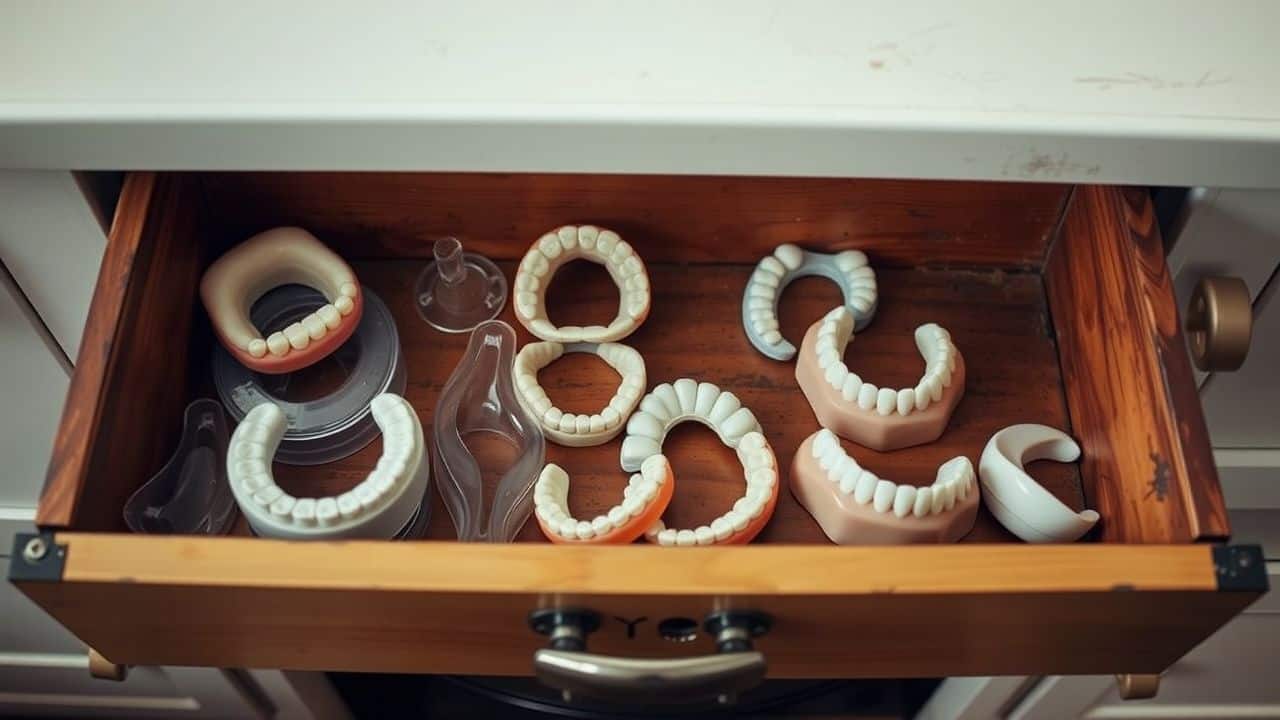Getting dental implants covered by medical insurance feels like finding a needle in a haystack. Most insurance companies label dental implants as cosmetic procedures and refuse to pay for them.
But here’s the good news – you can get your medical insurance to cover dental implants through six proven steps. Ready to learn how to save thousands on your dental implants?
Key Takeaways
Medical insurance may cover dental implants if they’re needed due to accidents, injuries, or health conditions that affect eating or speaking abilities.
Getting coverage requires proper documentation, including a medical necessity letter, comprehensive dental evaluation, and correct billing codes (CPT codes 21076-21089).
Most dental insurance plans cap yearly benefits at $1,000-$1,500, while medical insurance often has higher coverage limits and lower copays for covered services.
Patients can use FSAs (up to $2,850 annually) or HSAs to pay for implants with pre-tax money, and supplemental dental insurance can help cover remaining costs.
If implants aren’t covered, bridges cost about $4,313, while full dentures run around $6,800 and need replacement every five years.
Table of Contents
Understanding Dental Implants Coverage

Getting dental implants covered by medical insurance needs clear understanding of both medical and dental policies. Your medical insurance might pay for dental implants if they’re needed due to an accident, injury, or health condition that affects your ability to eat or speak.
Medical Insurance vs. Dental Insurance

Dental coverage can feel like solving a puzzle. Your wallet will thank you for knowing the key differences between medical and dental insurance plans.
| Medical Insurance | Dental Insurance |
|---|---|
| Focuses on overall health conditions | Primarily covers teeth and gum care |
| Higher annual coverage limits | Limited to $1,000-$1,500 annually |
| May cover dental work linked to medical issues | Covers 100% of preventive care |
| Could cover implants from accidents or trauma | Covers 10-50% of implant costs after deductible |
| Often includes emergency dental procedures | Covers 80% of basic dental services |
| Typically has lower copays for covered services | Higher out-of-pocket costs for major procedures |
Ladies, here’s the scoop: Medical insurance might cover your All-on-4 dental implant solution if they’re needed due to an accident or medical condition. Your regular dental plan kicks in for routine care but comes with strict yearly limits. Medical coverage often steps up for bigger dental issues tied to your health. Think of medical insurance as your backup dancer – ready to step in when dental coverage takes a bow.
Smart tip: Keep both insurance cards handy. You might need to tap into both coverage types for major dental work. This tag-team approach could save you thousands on your dental care journey.
When Medical Insurance Covers Dental Implants

Medical insurance steps in to cover implants in specific situations. Your health plan might pay for implants after accidents, injuries, or birth defects that affect your jaw. A car crash victim with severe facial trauma would qualify for coverage.
Birth conditions like cleft palate often trigger insurance approval too.
Insurance coverage for dental implants isn’t just about aesthetics – it’s about restoring essential oral function and overall health.
Medical necessity drives the coverage decision by insurance companies. Your oral surgeon must prove that implants are vital for your health, not just cosmetic. The insurance company looks for clear links between medical conditions and the need for implants.
Proper documentation from your healthcare team makes a huge difference in getting approved. Let’s explore the exact steps to obtain coverage for your dental implants.
Steps to Get Dental Implants Covered by Medical Insurance

Getting your medical insurance to pay for dental implants needs clear steps and proper paperwork. Your path to coverage starts with knowing the right forms to fill out and learning which medical codes will help you win approval from your insurance company.
Obtain a Comprehensive Dental and Medical Evaluation

Your first step starts with a full dental check-up. Your dentist needs to look at your teeth, gums, and jawbone health through X-rays and physical exams. These tests show if your mouth can support dental implants.
The dental team at Shahbazyan DDS will check for gum disease, bone loss, and other oral health issues that might affect your implant success.
A medical evaluation comes next to spot any health problems that could slow down healing. Your doctor will review your medical history and current medications. This step matters because some health conditions, like diabetes or heart disease, can impact how well implants work.
Provide a Medical Necessity Letter

After getting a full dental exam, you’ll need a strong medical necessity letter. This letter acts as your golden ticket for insurance coverage. A skilled dentist or oral surgeon must write this letter to explain why dental implants are medically needed.
The letter should clearly link implants to specific health issues like trauma, bone loss, or birth defects. I’ve seen many patients succeed with detailed letters that spell out how implants will fix their eating and speaking problems.
The best medical necessity letters pack a punch with solid facts and medical terms. My patients who got coverage included details about their jaw bone health, bite problems, and how these issues affect their daily life.
The letter must show that implants aren’t just about wanting to improve your smile.
Insurance companies look for proof that implants are the only way to fix serious medical problems. Make sure your doctor includes any relevant health conditions like osteoporosis or accident-related injuries in the letter.
Communicate with Your Insurance Provider

Picking up the phone to talk with your insurance provider marks a vital step in your dental implant journey. Your first call should focus on getting clear answers about your coverage details and out-of-pocket costs.
Ask specific questions about what parts of the implant procedure they’ll pay for. Many providers cover bone grafting or tooth extraction but might skip the actual implant placement.
Understanding your insurance coverage upfront saves you from surprise bills later.
Direct talks with insurance agents help you learn about pre-authorization needs and billing codes. Olympic View Dental works with patients to smooth out these insurance talks. Keep notes during your calls and get the agent’s name and call reference number.
Your provider might ask for a pre-treatment estimate from your dentist to figure out which parts of the procedure they’ll cover. This step helps you plan your budget and avoid unexpected costs down the road.
Submit Pre-Authorization Requests

After talking with your insurance provider, you’ll need to submit pre-authorization paperwork. Your dental office should help gather all needed items for this step. The pre-authorization package must include your dental evaluations and a medical necessity letter from your dentist.
I learned this firsthand when helping my sister with her implant coverage last year.
Your insurance company needs clear proof that dental implants are a medical must, not just a cosmetic choice. Send in your x-rays, photos, and detailed notes about your tooth loss and health issues.
Many insurance providers want to see how the missing teeth affect your daily life, from eating to speaking. Keep copies of everything you submit, and follow up with your insurance company every week until you get an answer.
Use Proper Medical Billing Codes

Medical billing codes play a key role in getting your dental implants covered. Your dentist must use CPT codes 21076 through 21089 for any prostheses they create in-office. These codes tell your insurance company exactly what procedures you need.
I learned this firsthand while helping patients file their claims at a dental office.
Your insurance provider looks at specific HCPCS codes for lab-made prostheses as durable medical equipment. Getting these codes right makes a big difference in your coverage approval.
The right code can mean the difference between paying thousands out of pocket or having insurance pick up most of the bill. Your dental office staff should know these codes well and use them correctly on all insurance paperwork.
File a Claim with Necessary Documentation
Filing insurance claims needs the right paperwork to back up your case. Your dental office must send X-rays, a detailed treatment plan, and an itemized cost breakdown to your insurance company.
A letter from your dentist explaining why you need implants will boost your chances of approval.
Success in dental claims comes down to having your ducks in a row with proper documentation.
I learned that organizing your paperwork before filing saves time and stress. Start a folder with copies of your medical records, treatment plans, and cost estimates. Your dental office staff can help gather these items for your claim.
Most insurance providers want to see clear proof of why implants are needed rather than other tooth replacement options like bridges or dentures. The more complete your documentation, the faster your claim moves through the system.
Handling Insurance Denials

Insurance companies often deny dental implant claims, but you can fight back. You’ll need a strong appeal with medical records, X-rays, and a clear explanation of why the implants are needed for your health, not just looks.
Common Reasons for Denials
Getting your dental implants covered can feel like a tough battle. Medical providers often reject claims for specific reasons, but knowing these can help you plan better.
- Medical necessity isn’t proven – Your dental implant must fix a medical problem, not just look nice. Providers want clear proof that you need the implant for health reasons, not just cosmetic ones.
- Documentation gaps exist – Missing X-rays, outdated medical records, or incomplete forms can stop your claim. Health insurance companies need full proof of your dental needs.
- Coverage limits reached – Many health plans cap yearly dental benefits. Once you hit this limit, they won’t pay for more work, even if you need it.
- Wrong billing codes used – Each dental procedure needs exact codes. One wrong number can make your whole claim fail.
- Pre-approval wasn’t obtained – Many insurers want to okay dental work before it starts. Skipping this step often leads to denied claims.
- Medical-dental overlap issues – Some procedures fall into a gray area between medical and dental care. Your health plan might say it’s dental, while dental insurance calls it medical.
- Out-of-network providers chosen – Picking a dentist outside your plan’s network can lead to claim denials. Network dentists agree to set prices and rules.
- Time limits passed – Claims filed too late get denied. Most plans have strict deadlines for submitting paperwork.
How to Appeal a Denied Claim
Insurance companies often deny dental implant claims on the first try. You can fight back and win your appeal with the right steps.
- Read your denial letter right away. Look for the exact reason they denied your claim and note any appeal deadlines. The Affordable Care Act gives you the right to challenge their decision.
- Call your insurance company’s customer service line. Ask detailed questions about why they rejected your claim. Take notes during the call and get the representative’s name and ID number.
- Gather strong medical proof from your dentist. Ask for a detailed letter explaining why you need implants for your health, not just looks. X-rays and photos help prove your case.
- Fill out all appeal forms completely. Double-check every box and signature line. Missing info can lead to another denial.
- Include a clear letter telling your story. Explain your dental problems in simple words. Add how the implants will help your daily life and overall health.
- Mail everything by certified mail. This gives you proof they got your appeal. Keep copies of all papers you send.
- Follow up every two weeks. Call to check your appeal status. Stay polite but firm in asking for updates.
- Request a special review if needed. Some cases qualify for an outside medical expert to look at your appeal.
The next important step involves finding smart ways to pay for your implants while waiting for insurance to decide.
Additional Tips to Maximize Coverage

Money matters for dental work, but smart planning can reduce your costs. You can combine different payment options like FSAs, HSAs, and supplemental dental insurance to maximize your savings.
Review Your Insurance Policy Thoroughly
Your insurance policy holds vital details about dental implant coverage. Pull out that policy document and look for terms like “oral surgery,” “reconstructive surgery,” or “medical necessity.” Many policies hide dental implant coverage under different sections.
Look closely at your deductibles, coinsurance, and yearly limits. Your health savings account or flexible spending account might help cover the costs too.
Smart policy readers check both medical and dental coverage sections. Most dental plans cap yearly benefits at $1,500, which won’t cover much of an implant’s cost. Medical insurance often steps in for implants needed after accidents or health issues.
Call your insurance provider directly to ask specific questions about coverage. The customer service team can point out hidden benefits you might miss in the policy text. Grab a highlighter and mark important coverage details as you read through each section.
Consider Supplemental Dental Insurance
Supplemental dental insurance fills the gaps that basic plans leave behind. Most dental plans max out at $2,000 per year, which barely covers half the cost of a single implant. Smart ladies grab an extra policy to stack on top of their main coverage.
This combo approach helps tackle those big dental bills without draining savings accounts.
Medical insurance rarely pays for the full implant process. A solid supplemental plan steps in to cover major dental work, including implants and dental crowns. The policyholder benefits from lower out-of-pocket costs through combined coverage limits.
FSA or HSA funds can pitch in too, making dental treatments more budget-friendly. Let’s explore how flexible spending accounts can boost your dental care savings.
Use Flexible Spending Accounts (FSA) or Health Savings Accounts (HSA)
Smart ladies know how to make health care costs lighter on their wallets. FSAs let you set aside up to $2,850 of pre-tax money each year through your employer. This money covers your dental implants and other medical expenses without paying taxes on it.
Think of it as getting a sweet discount on your dental work!
HSAs work like your personal piggy bank for health costs. You own this account forever, and the money rolls over year after year. Both FSAs and HSAs help pay for dental implants, anesthesia, and other dental care needs.
Many dental practices accept these payment methods right at their front desk. Your next step is to check out dental bridges and dentures as backup options for tooth replacement.
Alternatives to Dental Implants

If dental implants don’t fit your budget or medical needs, you’ll find other great options to restore your smile – let’s explore these choices in detail! 👉
Dental Bridges
Dental bridges offer a budget-friendly option to replace missing teeth. These fixed devices cost about $4,313 at Aspen Dental, making them more affordable than some alternatives. A bridge uses your natural teeth as anchors to hold an artificial tooth in place.
The process starts with your dentist preparing the anchor teeth next to your gap. They’ll shape these teeth to hold the bridge’s crowns securely.
Most bridges last 5–10 years with proper dental hygiene and regular checkups. Your dentist will check the fit during each visit to spot any issues early. Daily flossing and brushing around your bridge helps prevent cavities in the anchor teeth.
The success rate varies based on different studies, but many patients enjoy restored smiling and chewing ability. Your dental professional can help decide if bridges match your needs better than other tooth replacement options.
Dentures
Dentures serve as a practical solution for missing teeth, but they come with a price tag of about $6,800 for a full set. I learned this firsthand while helping my mom explore tooth replacement options last year.
These artificial teeth need replacement every five years, according to the American College of Prosthodontists. Many dental professionals suggest regular check-ups to maintain proper fit and comfort.
The good news? Modern implant-supported removable partial dentures offer better results than old-school dentures. My mom picked this option, and she loves how natural they feel. These partial dentures boost both life quality and smile satisfaction compared to traditional removable ones.
Plus, they stay firmly in place during meals and talks – no more worries about slipping or clicking sounds that often bug regular denture users.
People Also Ask
How much do dental implants cost without insurance?
Dental implants, a permanent tooth replacement option, can cost a lot. Most people use credit cards or loans with low interest rates. Some look into community health centers for lower service charges.
What types of dental work does Medicare Advantage cover?
Medicare Advantage plans often cover basic dental care like fillings, tooth extractions, and root canals. They may help with surgical interventions too. Check your premiums and coverage details carefully.
Can health insurance cover dental implants after facial injuries?
Yes! Medical insurance might cover dental implants if they’re needed after facial injuries. Talk to your orthodontist about filing claims through the health insurance marketplace.
What’s the difference between implants and other dental fixes?
Unlike veneers or teeth whitening, implants replace the whole tooth down to the gumline. They need special care during osseointegration. Your dentist will attach an abutment once healing is done.
How can I find affordable dental implant options?
Look into group life insurance plans at work, or check lending options with low interest. Some orthodontics offices offer payment plans. Community health centers might have better rates.
What steps should I take before getting implants?
First, fix any cavity issues. Get needed extractions done. Read up on the process. Check your insurance coverage for surgical work. Get a second opinion about whether implants are right for you.
References
https://www.investopedia.com/how-to-get-dental-implants-covered-by-insurance-8580639
https://www.thepeakdental.com/patient-education/get-dental-implants-covered-by-medical-insurance
https://shahbazyandentalstudio.com/blog/dental-implants-covered-by-medical-insurance/ (2024-09-19)
https://olympicviewdental.com/how-to-get-dental-implants-covered-by-your-insurance/ (2024-04-25)
https://www.billing-coding.com/full-article.cfm?articleID=6460
https://dentalbilling.com/advice-appeal-denied-claim/
https://hubbarddentalnc.com/blog/how-to-get-dental-implants-covered-insurance/ (2023-09-22)
https://www.flossy.com/blog/can-you-use-flexible-spending-account-for-dental-implants (2024-10-31)
https://www.researchgate.net/publication/26295621_Cost-effectiveness_modeling_of_dental_implant_vs_Bridge (2024-10-22)
